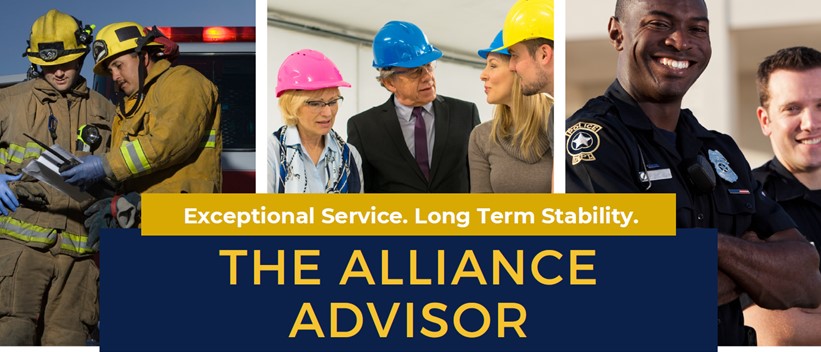
In This Issue
- Comp Alliance Welcomes Six New Members in January 2023
- Comp Alliance Rewards Its Members
- Winter Workplace Exposures and How to Control Them
- Anatomy of a Claim
- Upcoming Virtual Training Seminars
- Visit Us at NYCOM and AOT Events
- Comp Alliance School Network Group Meeting
- Featured Safety Source Topic – Winter Driving in Extreme Weather Conditions
- Stay Informed
Comp Alliance Welcomes Six New Members in January 2023
The Comp Alliance would like to welcome the following new members to the program and look forward to working with all of you.
- City of Dunkirk
- Great Neck Park District
- Onondaga County Soil and Water
- Town of Carrollton
- Town of Henrietta
- Town of Indian Lake
The Alliance remains a predictable solution for workers’ compensation for program members. The program now has over 330 members and 99% of our membership renewed their coverage with the Alliance this year! More than half of our members have taken advantage of our multi-year pricing programs. This means that they are able to predict their cost for up to three years without worry of a payroll audit changing contribution or a bad year of claims impacting their costs.
Comp Alliance Rewards Its Members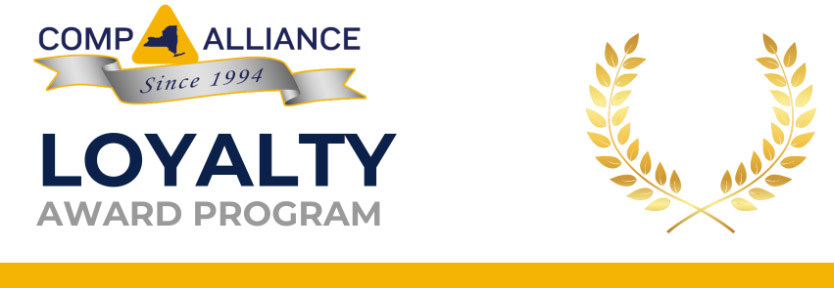
As the Comp Alliance continues its history of predictable rates and financial stability, we are proud to be able to give back to the members. In the past four years, the Comp Alliance has distributed annual Loyalty and Safe Workplace Awards totaling $5,805,530. We are pleased to announce that these programs have been continued through June 2024.
In November, the Comp Alliance distributed Safe Workplace Awards of nearly $450,000 to more than 100 eligible members. The Safe Workplace Award Program is a monetary award provided to the safest workplaces in New York State. This award benefits Comp Alliance members who have had positive loss experience and contributed to the financial well-being of the program during a given policy year. Comp Alliance members on a June / July policy cycle who qualify for a Safe Workplace Award will be contacted in early spring 2023.
In addition, the Comp Alliance will be distributing more than $466,000 in member loyalty awards to 176 members in early February as it concludes its Loyalty Award disbursements for FY2023. The initial checks will be distributed to attendees of the upcoming NYCOM Winter Legislative Conference and the Association of Towns Annual Meeting and Training School. Municipal officials in attendance at either of those events should stop by the Comp Alliance booth for an early distribution of their award. Following those events, all other recipients will be contacted to arrange the delivery of their award.
The Loyalty Award Program symbolizes the tangible benefits and savings that result from municipal cooperation. These savings are generated by the hard work, dedication, and commitment to long-term safety by each of our members. In turn, through the leadership and oversight of its Board of Trustees, the Comp Alliance is financially positioned to keep rates stable and return these savings directly to its members. The Comp Alliance Board of Trustees will continue to evaluate the program's financial condition on an annual basis and determine eligibility for the program going forward.
Winter Workplace Exposures and How to Control Them
Another winter season is upon us, and as seasoned residents of the Northeast, we expect inclement weather and plan accordingly. Winter gloves, boots, hats and heavy jackets are pulled from storage, our snow blowers get gassed up and serviced and snow tires installed on our vehicles.
For local government and school officials, there is the added responsibility of understanding and preparing for the risks that winter weather poses, as they are the ones responsible for keeping the public safe, and for keeping their employees safe in so doing. Below is a look at some of the unique seasonal exposures present to our workers and some best practices for eliminating workplace injuries while ensuring that public roads, facilities and schools are safe for the public.
Slips and Falls – Slip and fall injuries are a leading cause of workplace injuries year-round, but winter conditions create a greater opportunity for these injuries to occur. Walking conditions, both inside and out, become slick from the snow and ice, making slips and falls more likely. Injuries of this nature occur most frequently in parking lots and sidewalks and even on surfaces that are in good condition but can also occur when this mess is tracked inside buildings.
Best practices for the prevention of these slip and fall injuries include a formal snow and ice removal process. This includes plowing, salt/sand application, and snow plowing sidewalks. Additionally, when building maintenance staff clear snow from main entrances and apply salt or sand, they should document this process to confirm it is completed in a timely, routine manner. During the winter months, daylight hours are limited, and sunset occurs before 5:00 p.m. This greatly reduces visibility in the parking lots and other walking surfaces. Consider improving exterior lighting for any dimly lit areas so that dangerous areas can be spotted and avoided. When icy and slick exterior surfaces are observed, a reporting process to get them addressed quickly should be in place for all staff to follow.
Floor mats and runners are used to provide slip-resistant walking surfaces in areas where floors may be slippery. Inside and outside building entrances they help prevent slips and falls where water, snow or other material might make floor surfaces slippery. In lobbies and corridors, they can improve footing, particularly on highly polished floors or in areas where people are likely to make sudden movements that could lead to slipping. Around swimming pools, in shower stalls, around drinking fountains and vending/ice machines, aisles and in garages and factories, they protect people where water, oil, food, waste and other materials might make the floor slippery. The color of the mat should contrast with the floor for high visibility. Poor visibility might increase the tripping hazard.
Wet floor signs should be used in slippery areas. It’s important to remove wet floor signs when no hazard is present. Failure to do so reduces their effectiveness when a hazard needs to be communicated. It may be useful to routinely inspect storage locations and the condition of signs to make sure they are ready and available when needed.
Falls from Heights – Falls from heights usually involve stairs or ladders. Consider your operations which occur outside year-round, such as water and sewer plants, sanitation collection and DPW or Highway operations. These departments have job functions consisting mostly of outdoor work which can be treacherous in the winter. Cold temperatures can create very slick exterior metal stairs, ladder treads, handrails, truck steps and grab bars around the grounds of water and sewer facilities. Handrails can be slick from snow, ice and water making it difficult to maintain the three points of contact necessary to safely traverse stairs or ladders. When the equipment is outdoors, employees wearing light weight gloves may also have compromised gripping surface as they can be worn out and not designed for cold weather. Packers used during sanitation operations also include metal steps and handles which get very slick during the winter. Corrective measures for these operations include wearing gloves which are insulated and have good grip texture. Leather gloves are acceptable for use, but those with dimpled palms and fingers are preferred as they provide additional grip. Keep the rails free of ice and snow, and consider textured, anti-slip rails and grab bars instead of smooth ones. Boots with good, well-gripping rubber soles are a much better option in the winter. Keep the soles clean and clear of snow build-up when possible.
Motor Vehicle Accidents – The majority of motor vehicle accidents causing workplace injuries, including those occurring during the winter months, are preventable. Adverse weather conditions, when added to the usual causes of distracted driving, speed, failure to yield and aggressive driving, cause vehicle accidents to increase in frequency and severity. Corrective measures for these accidents include the use of standard defensive driving tactics. Stopping distances are increased when the roadways are cold, icy and snow-covered, so allow for additional space between you and the vehicle in front. Apply your brakes earlier than normal and feather the pedal so as not to lock up the brakes. Observe the roadway plane, as braking on a downhill will likely send the vehicle into a skid and braking too hard on an uphill will cause the vehicle to lose momentum.
In the winter, visibility can be limited and effects perception and reaction times. This creates less distance to safely stop for a roadway obstruction. Defensive driving in winter months includes slowing down, especially when approaching intersections. Other drivers may attempt to pull out in front of you greatly reducing your following distances. This is especially true for plow trucks, as civilians see them coming and pull out ahead of them to not be slowed by the truck. Be ready for this type of dangerous maneuver from others and slow down beforehand.
It is always important to wear your seat belt whenever you are in a motor vehicle, including passengers, as their use has proven to prevent and lesson injuries. One additional note on reducing vehicle accidents is to keep your vehicle in good working condition, including tires with good tread depth, heater and defroster, horn, windshield wipers with below-freezing washer fluid, and properly aligned headlights.
Hypothermia and Frostbite – Dress appropriately and avoid staying in the cold too long. Wear a hat and gloves to cover any exposed skin (consider a face mask as well) and utilize layers of clothing, even for your lower body (long underwear, long johns) and exterior shells which are waterproof. Avoid unnecessary exposure of any part of the body to the cold. Drink plenty of warm fluids or warm water but avoid caffeine and alcohol.
Lifting – Strains caused by lifting are a leading cause of workplace injuries year-round, but in the winter months, these injuries can increase. The increase is caused by several factors, including:
- Shoveling Snow – when shoveling snow, it’s important to warm your muscles before heading out by doing some light movements, such as bending side to side or walking in place. As much as possible you should push snow rather than lifting it. Pushing the snow with the shovel instead of lifting can help reduce the strain on your body. When lifting snow, bend your knees and use your legs when possible. Choose your shovel wisely. Ergonomically designed shovels can help reduce the amount of bending you have to do. Consider using a lighter-weight plastic shovel instead of a metal one to help decrease the weight being lifted. Pace yourself and be sure to take frequent breaks. Consider taking a break after 20 to 30 minutes of shoveling, especially when the snow is wet. Consider shoveling periodically throughout the storm to avoid having to move large amounts of snow at once. Try to shovel snow shortly after it falls when it's lighter and fluffier. The longer snow stays on the ground, the wetter it can become. Wet snow is heavier and harder to move. Drink plenty of water to stay hydrated while shoveling.
- Reduced blood circulation caused by cold temperatures, which compromises muscle effectiveness. When muscles are cold, they are not as functional or elastic, and stressing them from lifting can cause injury. A solution is to try a warmup exercise to get the muscles moving and blood flow increasing prior to any strenuous activities like lifting.
- Muscle tension increases in cold weather. The body has a natural defense mechanism which is to restrict in posture, hunching the shoulders and drawing in the arms. This posture is not ideal when lifting or moving objects and causes additional strain on the back. Be sure to keep a straight back when lifting and always move with the legs and avoid twisting while lifting.
Workplace Violence Prevention – Lastly, we have a winter exposure wholly unrelated to weather. Many municipalities collect taxes during the winter months. Consider the protections of your tax collectors against a workplace violence attack when an abundance of cash might be on-hand.
- Do they have barrier/separation protections from the public (office enclosure, counters, glass enclosure, etc.)?
- Do they work alone or with other staff nearby?
- Are they provided with a panic button to alert emergency services in the event of violent situation?
- Do they have good visibility in the parking lot?
- Do they have protections while making bank deposits?
The potential for an employee to be the subject of a workplace violence episode increases when money is handled, and the tax collection process lends itself to this exposure. Be sure to consider protective measures for your staff throughout this process.
Winter workplace exposures are numerous but with an improved understanding of how they might occur and considerations to prevent them, your municipal staff can get through these harsh conditions without incident and will look forward to the spring and improved conditions.
Anatomy of a Claim
When an injury takes place at your jobsite, our staff is ready to meet the challenge with closely coordinated activity on every front.
We hope a serious accident never takes place. Nevertheless, a description of the actions and developments that take place in the aftermath of a recent accident will help our readers understand how the employer, the hospital, the nurse case manager, the adjuster, and the claim supervisor all work together to develop the best possible outcome for the employee after a serious trauma.
The Incident (Date of Injury or DOI): Due to a slip and fall, an employee becomes unconscious. The employee’s supervisor calls for emergency services immediately and calls the head of his department to report what happened. The department head then notifies the employer’s designated staff contact for workplace injuries (or the appropriate administrative officer for the employer, if no designated contact is assigned this responsibility) and reports all the details of the accident.
Timely Reporting of the C-2F, First Report of Injury Form (0-24 hours from DOI): The designated administrative staff completes the C2F form and emails it to the Comp Alliance, along with the claimant’s supervisor’s report. The timing is critically important, because when an injury is serious, speedy communication between the Comp Alliance adjusters and the hospital staff is often necessary. In this case particular, reporting to the Comp Alliance occurred within six hours of the injury taking place.
Adjuster Initial Contact to Employer (1-24 hours from receipt of report): Once the claim is received by the Comp Alliance, a claim adjuster calls the employer to confirm the details of the claim and to provide the employer with a claim number. In this case, the employer reports that the employee had been placed in the ICU at the hospital and would not be returning to work in the near future. The adjuster places her investigative notes in the system, and the adjuster’s supervisor reviews the accident reports and places additional details regarding the accident into the file.
Discussion of Additional Forms Needed (As soon as possible / within 48 hours of DOI) - The claim adjuster requests from the employer a wage history form for the employee. The employer completes the form and emailed it the adjuster the day after the injury. In this case, the injured employee was part-time employee and not eligible for salary continuation by the employer, meaning the Comp Alliance would need to be ready to issue wage replacement (indemnity) payments to the employee.
Adjuster Files forms with the Workers’ Compensation Board (WCB) (within 24 hours of receipt of claim): The Comp Alliance adjuster files the initial forms with the Workers’ Compensation Board advising of the status of the claim. Supplemental forms are filed as the claim progresses.
Nurse Case Manager is Assigned to the Claim (24-72 hours from DOI) - On the same day the Comp Alliance receives the claim, the adjuster refers the case to our Nurse Case Manager (NCM). After reviewing the reports and notes, the NCM calls the adjuster and recommends that an on-site nurse be assigned to the case. This field nurse contacts the hospital’s ICU unit and provides our claim number and contact information, and then obtains the necessary permissions to visit the patient in the hospital and meets with the employee’s parents. The treating physician recommends the claimant to be removed to an acute rehab facility. The claim adjuster authorizes the transfer, but the employee’s parents prefer to have the patient transferred to home care, as he is more comfortable in familiar surroundings than a remote facility. The field nurse assists the employee’s parents with coordinating his discharge to home services.
Claimant Released and Home Care Established (within 1 week of DOI) - The claimant is improving, and the adjuster and NCM authorize a home care plan. The plan includes a home Registered Nurse visits as well as physical and occupational therapy. The claimant is released to his home six days after the accident and continues to improve. The Comp Alliance’s field nurse makes follow-up contacts to gauge the patient’s progress and to ensure that all medical needs are continue to be met.
Adjuster Calculates Average Weekly Wage and Issues Check (within 2 weeks of DOI): Using the employer’s wage history form, the claim adjuster calculated the employee’s average weekly wage, and issues him a two-week compensation check within nine days of the accident date. Payments to the injured employee are continued on a (weekly/bi-weekly) basis.
This claim was just one of the 1,729 claims that our office handled during the first 11 months of 2022. The timely and professional communications between the employer, adjuster, supervisor, nurse case manager, claimant, claimant’s family, and the hospital staff helped to expedite the claim and minimize the emotional trauma and worry that may come with a serious accident.
Upcoming Virtual Training Seminars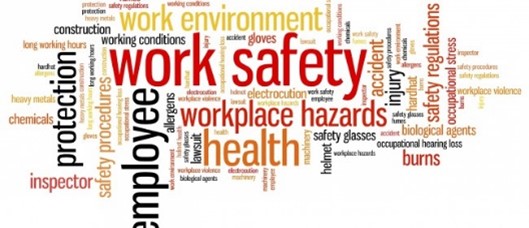
The Comp Alliance has several Live Virtual Video Conference Trainings scheduled for our members throughout the months of July and August.
PESH-mandated topics of Workplace Violence, Right-To-Know – Chemical Safety, and Blood-Borne Pathogens will be covered.
Upcoming Schedule

The Comp Alliance also has scheduled virtual training programs covering the mandatory PESH-required topic of HAZWOPER. This awareness level seminar is required for municipal employees who may be the first upon a hazardous waste emergency on-site or off-site. Recommended for highway, department of public works, water and sewer and sanitation departments.
Upcoming HAZWOPER Schedule

Email Robert Blaisdell at This email address is being protected from spambots. You need JavaScript enabled to view it. to register for any of these training sessions. Attendance is limited. Please continue to check your email and the Comp Alliance website www.compalliance.org for additional dates later in the year.
Visit Us at NYCOM and AOT Events!
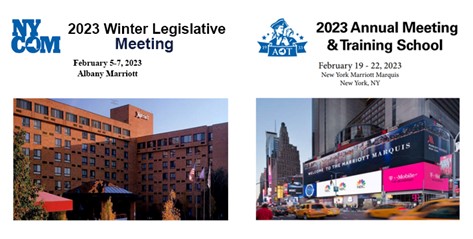
We invite you to join us at the upcoming NYCOM Winter Legislative Meeting February 5-7, 2023 at the Albany Marriott. At the conference the Comp Alliance will be distributing Member Loyalty checks to our January renewal program members. Please stop by our booth to receive your check. The Comp Alliance will also be sponsoring a hospitality room and look forward to seeing all of you there.
The Comp Alliance also invites you to join us at the AOT Annual Meeting and Training School February 19-22, 2023 at the Marriott Marquis in New York. January renewal members will have the opportunity to receive your Member Loyalty Award check by visiting our booth. The Comp Alliance looks forward to hosting a Member Appreciation Reception on Sunday evening February 19th and we invite all of you to join us during the following sessions at the conference:
Dazed and Confused About Employee Drug and Alcohol Testing? Tuesday, February 21, 2023 11:00 a.m. - 12:30 p.m., Booth/Edison, 5th Floor Learn the sobering truth about the hazards of drug and alcohol use in the workplace, and the rights and obligations of municipal employers as they deal with impaired employees. We will provide a high-level discussion on the regulatory framework of drug and alcohol testing with a particular focus on the newly enacted Marijuana Regulation and Taxation Act.
Navigating a First Amendment Audit Monday, February 20, 2023 10:30 a.m. - 11:20 a.m., Belasco/Broadhurst 5th Floor First Amendment audits are happening across the country and in towns in New York State. First Amendment auditors seek to film town facilities, operations and interactions with town officers and employees and often post them on social media platforms. This session will review basic First Amendment principles and case law associated with the use of recording equipment on town property and considerations for creating reasonable time, place and manner rules regarding the use of recording equipment on town property. We’ll also discuss employee safety and best practices for interacting with individuals who are conducting First Amendment audits. Questions are allowed and encouraged during the session.
On Tuesday morning during the Breakfast with the Association, the Comp Alliance will honor its G. Jeffrey Haber Leadership Award recipient.
We look forward to seeing all of you at both of these great annual events put on by the Association of Towns and the Conference of Mayors.
Comp Alliance School Network Group Meeting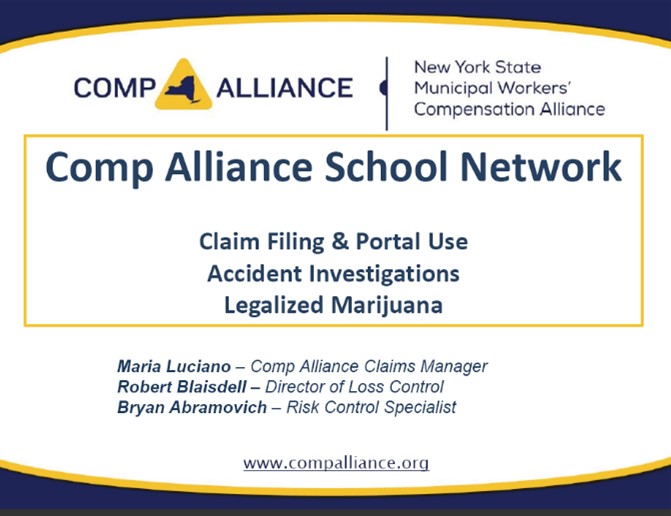
The Comp Alliance School Network met in November discussing the topics of claim filing and portal use, accident investigations and legalized marijuana.
We hope that our school members who were able to participate found the webinar informative. Please let us know of topics you would like us to cover in the future.
The webinar is available for review in our Comp Academy. Please keep a lookout for information on our next School Network Meeting.
Featured Safety Source Topic – Winter Driving in Extreme Weather Conditions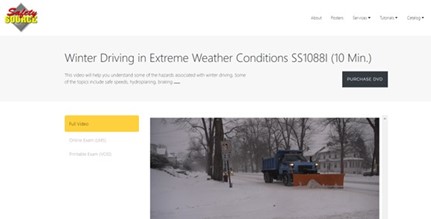
One of the many hazards we face in the winter months is driving in extreme weather conditions. Our featured Safety Source Video for this newsletter provides safety tips for driving in these conditions. This 10 minute video will help you understand some of the hazards associated with winter driving. Some of the topics include safe speed, hydroplaning, braking and pre-trip inspections.
The Safety Source Library is available by clicking here. If you are not yet registered for access to this diverse video library, please contact This email address is being protected from spambots. You need JavaScript enabled to view it..
Stay Informed
The Comp Alliance strives to keep members informed of the latest industry and program news. Please visit us at www.compalliance.org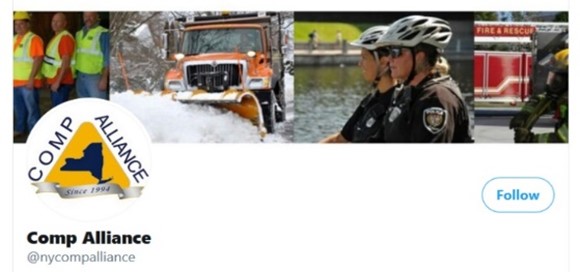 for the latest news, updated events calendar, safety articles, safety bulletins and more.
for the latest news, updated events calendar, safety articles, safety bulletins and more.
Don’t forget to follow us on Facebook & Twitter!



